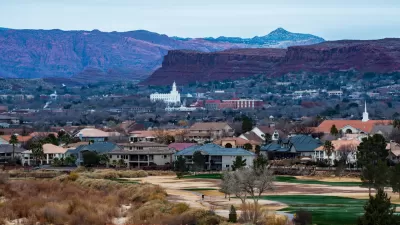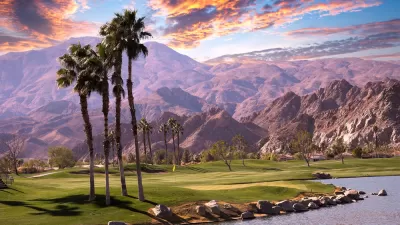An op-ed argues that instead of building a more resilient and sustainable water supply infrastructure, two water bills before congress would rollback exiting environmental protections.

Peter H. Gleick, a hydroclimatologist who serves as thepresident of the Pacific Institute and a member of the U.S. National Academy of Sciences, writes an opinion piece for the Los Angeles Times claiming that the federal government is on the precipice of enacting legislation that "wipe out decades of progress in sustainable water use."
Namely, "a California-centric bill sponsored by Sen. Dianne Feinstein and a Western water bill sponsored by Rep. David Valadao both contain egregious, anti-environmental giveaways hidden behind modest provisions for modernizing California's water system," writes Gleick.
The laundry list of complaints voiced by Gleick include the bills' potential to undermine environmental protections for salmon and other endangered species, preempt the state's existing watershed rules for rivers, provide "pork-barrel federal funding for reservoirs that would produce little usable water, flood Native American cultural sites, or violate Wild and Scenic River protections."
The problem with the two bills is one of concept, according to Gleick. Both bills endeavor to "squeeze even more water out of an already overtapped system."Instead of the many bad parts of this bill, according to Gleick, in support of a few good changes, no bill would be preferable.
FULL STORY: Congress is about to wipe out decades of progress in sustainable water use

Alabama: Trump Terminates Settlements for Black Communities Harmed By Raw Sewage
Trump deemed the landmark civil rights agreement “illegal DEI and environmental justice policy.”

Planetizen Federal Action Tracker
A weekly monitor of how Trump’s orders and actions are impacting planners and planning in America.

The 120 Year Old Tiny Home Villages That Sheltered San Francisco’s Earthquake Refugees
More than a century ago, San Francisco mobilized to house thousands of residents displaced by the 1906 earthquake. Could their strategy offer a model for the present?

Indy Neighborhood Group Builds Temporary Multi-Use Path
Community members, aided in part by funding from the city, repurposed a vehicle lane to create a protected bike and pedestrian path for the summer season.

Congestion Pricing Drops Holland Tunnel Delays by 65 Percent
New York City’s contentious tolling program has yielded improved traffic and roughly $100 million in revenue for the MTA.

In Both Crashes and Crime, Public Transportation is Far Safer than Driving
Contrary to popular assumptions, public transportation has far lower crash and crime rates than automobile travel. For safer communities, improve and encourage transit travel.
Urban Design for Planners 1: Software Tools
This six-course series explores essential urban design concepts using open source software and equips planners with the tools they need to participate fully in the urban design process.
Planning for Universal Design
Learn the tools for implementing Universal Design in planning regulations.
Clanton & Associates, Inc.
Jessamine County Fiscal Court
Institute for Housing and Urban Development Studies (IHS)
City of Grandview
Harvard GSD Executive Education
Toledo-Lucas County Plan Commissions
Salt Lake City
NYU Wagner Graduate School of Public Service





























